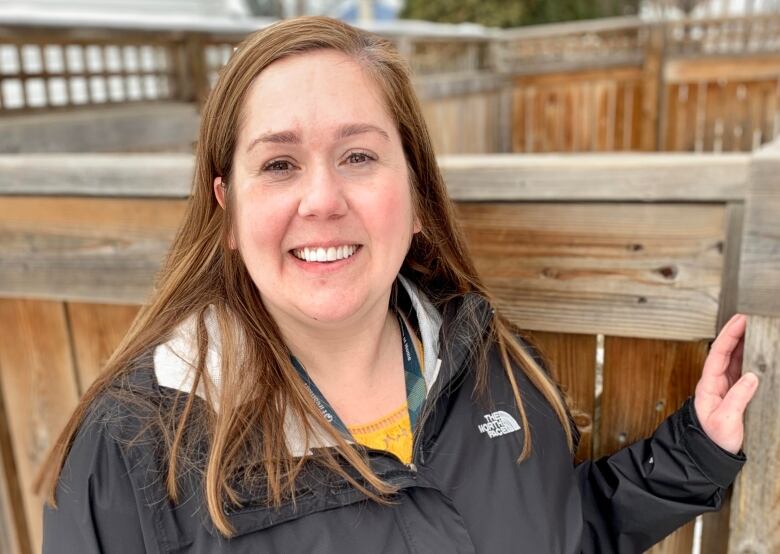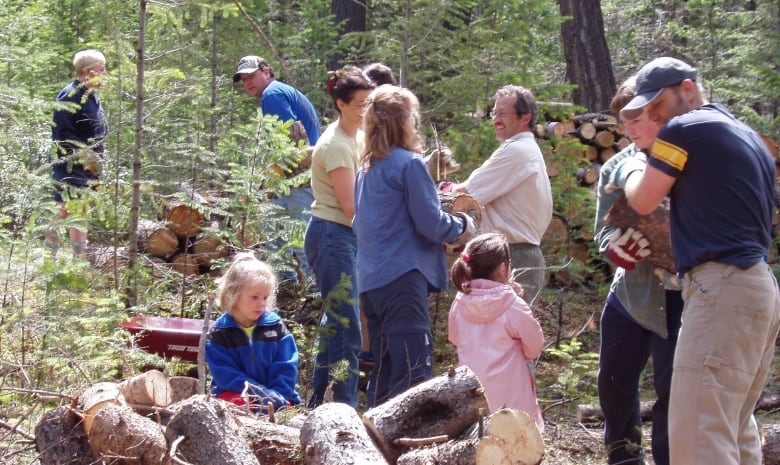Alberta bets on FireSmart to limit wildfire damage
'We need to carry on ... and maintain that vigilance forever,' says Jasper fire chief

This story is part of the World on Fire series, a five-part podcast that takes us to the front lines of out-of-control wildfires in Canada, Australia and California. Recorded during the COVID-19 pandemic, each episode examines what it takes to find hope in the midst of fear and destruction. Wildfires cost us our health, our homes and our communities, yet people everywhere rebuild and not just survive — but thrive.
Seeing massive wildfires destroy homes and businesses over the last decade has motivated more Alberta residents and communities to take part in FireSmart initiatives, experts say.
"FireSmart at the core is really about living resiliently with our wildfire reality in the province," says Laura Stewart, a FireSmart specialist with Alberta Wildfire.
"It's about taking proactive steps to reduce the risk and impact of wildfire on homes, communities and areas across the province."
The FireSmart program has existed for decades and its principles are increasingly put into action in Alberta, Stewart said.
"Municipalities are receiving calls and interest from local landowners across the province," she said. "Indigenous communities are hearing from the local residents that they're concerned about wildfire."
Between 2016 and 2019, more than $20 million was distributed by the Forest Resource Improvement Association of Alberta (FRIAA) to fund FireSmart initiatives in nearly 400 communities.
The association collects funds from the forestry sector to support programs that help maintain healthy forests. The non-profit is accountable to Alberta Agriculture and Forestry.
The province increased FireSmart funding by $20 million this year to encourage communities to take preventative action during the COVID-19 pandemic.
Falling embers
FireSmart concepts can be applied at the individual level by removing potential fuel for a fire around a home.
Houses that burn during a wildfire are usually ignited by embers that can be carried by the wind for up to two kilometres, Stewart said.
Property owners should not have any combustible materials within 1.5 metres of their homes.
"That is the no-fly zone," Stewart said. "Don't put anything that can burn within that zone."

That means removing woodpiles and wood mulch, maintaining a clear deck space and avoiding wooden fencing that abuts the house. Gutters should be cleaned regularly.
When it comes to construction, metal or asphalt shingles are preferable to cedar shakes or other flammable materials, said Stewart.
"The roof is the most vulnerable component of your home."
On the landscaping side, residents should avoid highly flammable coniferous trees and select plants with green leaves instead.
"It's those little things that make a dramatic difference on a property," Stewart said.
Community buy-in
In Jasper, FireSmart was officially adopted in 2004 but its principles have been applied since the 1990s, said fire Chief Greg Van Tighem.
The municipality focused on getting residents on board through education and community events, he said.
"It took upwards of 10 years to get a higher percentage of buy-in from the community, but right now, at this present time, we have an extremely engaged community in Jasper," Van Tighem said.

Jasper received $850,000 from the FRIAA to assist with FireSmart initiatives between 2017 and 2019.
The funding is also used to apply a concept known as forest field reduction, where wooded areas around a community are thinned out to reduce potential fuel for a wildfire.
"If a wildfire were to come ripping down the valley toward Jasper, that reduced fuel load would slow the fire down and then give us a chance to deal with it more effectively," Van Tighem said.
That work is never complete, he said.
"We need to carry on and keep this going on an annual basis and maintain that vigilance forever."
Forest health
The Municipality of Jasper works closely with Parks Canada, which maintains the forest within Jasper National Park.
Applying FireSmart concepts to a forest varies depending on the location, said Landon Shepherd, a fire and vegetation specialist with Jasper National Park.
"Sometimes that involves removing fuels and sometimes that involves promoting other non-flammable fuels like deciduous leafy trees and shrubs," Shepherd said.
When it's safe to do it, an intentionally set and controlled fire can help manage fuel accumulations.
"Prescribed fire is also being used, especially closer to communities, in a surgical fashion to reduce risk and change fuel distribution," said Shepherd.
The work is complicated by mountain pine beetle infestations that have left large swaths of the forest dead, dry and ready to burn.

In recent years, Parks Canada cut down and removed about 300 hectares of beetle-damaged forest near Jasper to make way for a different type of vegetation, Shepherd said.
The measure is a temporary solution that makes other FireSmart measures possible.
"There's an expectation that the work has to carry on and continue," he said. "You want to take advantage of this changing opportunity that you've helped create."


